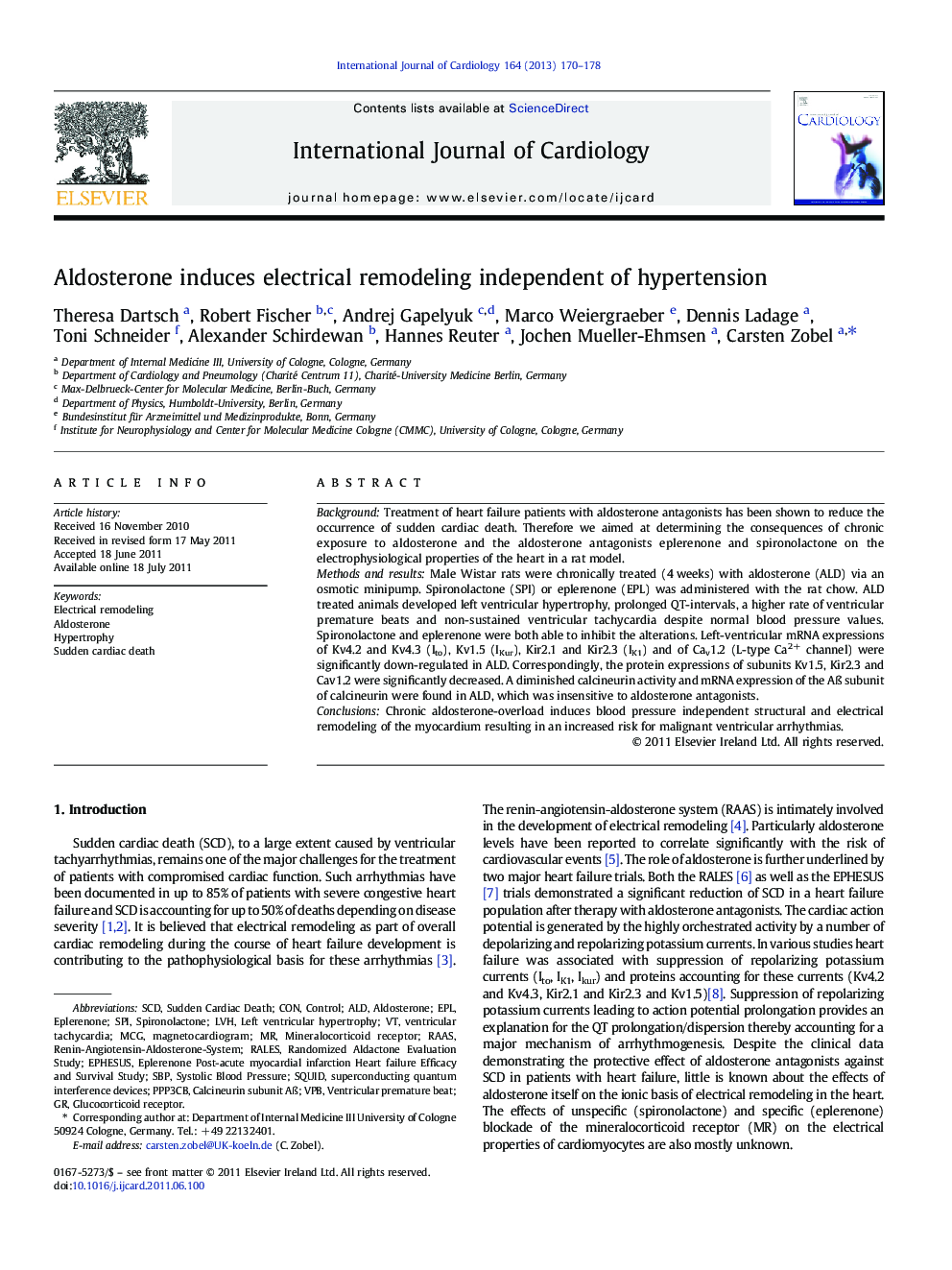| Article ID | Journal | Published Year | Pages | File Type |
|---|---|---|---|---|
| 5977628 | International Journal of Cardiology | 2013 | 9 Pages |
BackgroundTreatment of heart failure patients with aldosterone antagonists has been shown to reduce the occurrence of sudden cardiac death. Therefore we aimed at determining the consequences of chronic exposure to aldosterone and the aldosterone antagonists eplerenone and spironolactone on the electrophysiological properties of the heart in a rat model.Methods and resultsMale Wistar rats were chronically treated (4Â weeks) with aldosterone (ALD) via an osmotic minipump. Spironolactone (SPI) or eplerenone (EPL) was administered with the rat chow. ALD treated animals developed left ventricular hypertrophy, prolonged QT-intervals, a higher rate of ventricular premature beats and non-sustained ventricular tachycardia despite normal blood pressure values. Spironolactone and eplerenone were both able to inhibit the alterations. Left-ventricular mRNA expressions of Kv4.2 and Kv4.3 (Ito), Kv1.5 (IKur), Kir2.1 and Kir2.3 (IK1) and of Cav1.2 (L-type Ca2+ channel) were significantly down-regulated in ALD. Correspondingly, the protein expressions of subunits Kv1.5, Kir2.3 and Cav1.2 were significantly decreased. A diminished calcineurin activity and mRNA expression of the AÃ subunit of calcineurin were found in ALD, which was insensitive to aldosterone antagonists.ConclusionsChronic aldosterone-overload induces blood pressure independent structural and electrical remodeling of the myocardium resulting in an increased risk for malignant ventricular arrhythmias.
